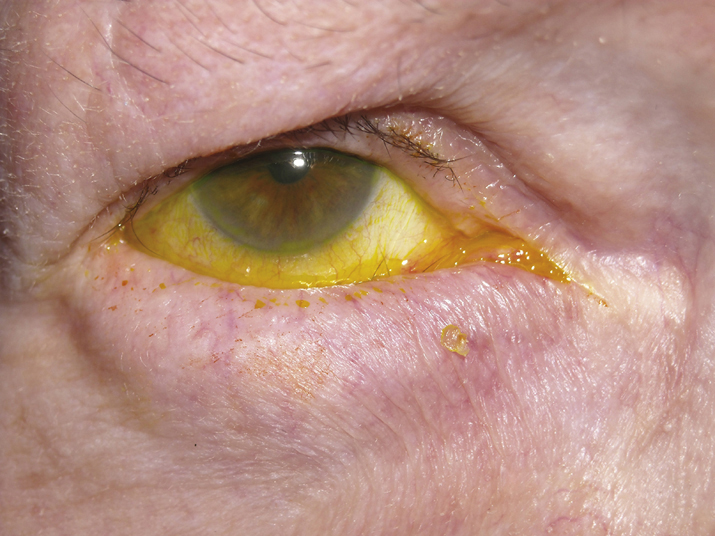Irritation, foreign-body sensation, tearing, and redness.
If blepharospasm is present, see 6.7, BLEPHAROSPASM.
- Aggressive lubrication and antibiotic ointment (e.g., erythromycin or bacitracin q.i.d.).
- Everting the eyelid margin away from the globe and taping it in place with lateral traction may be a temporizing measure.
- For spastic entropion, a Quickert suture placed at the bedside or in the office can temporarily resolve the eyelid malposition by tightening the lower eyelid retractors and rotating the eyelid margin anteriorly.
- Surgery is often required for permanent correction.
If the cornea is uninvolved, the condition does not require urgent attention or follow up. If the cornea is significantly damaged, aggressive treatment is indicated (see 4.1, SUPERFICIAL PUNCTATE KERATOPATHY). Follow up is determined by the severity of corneal involvement.
